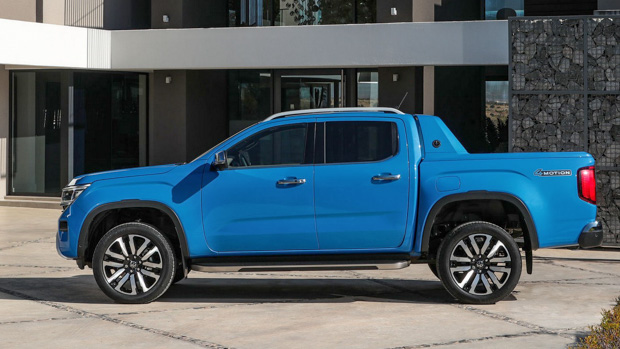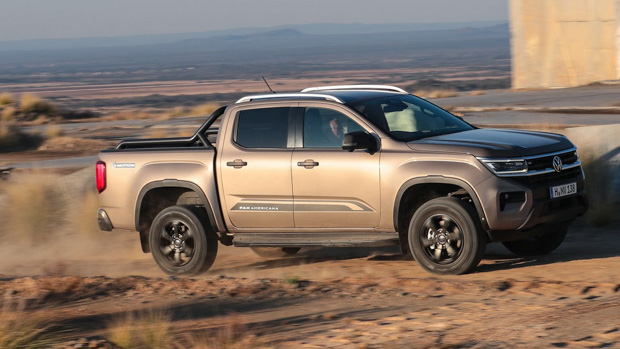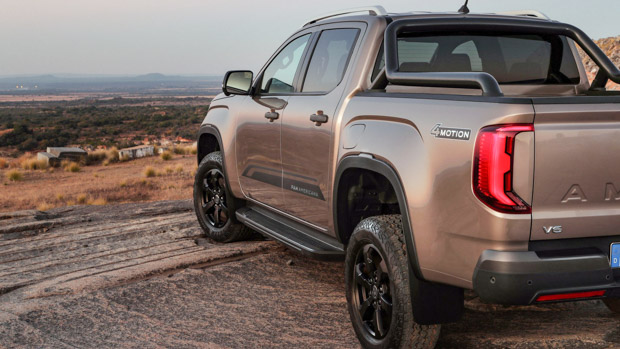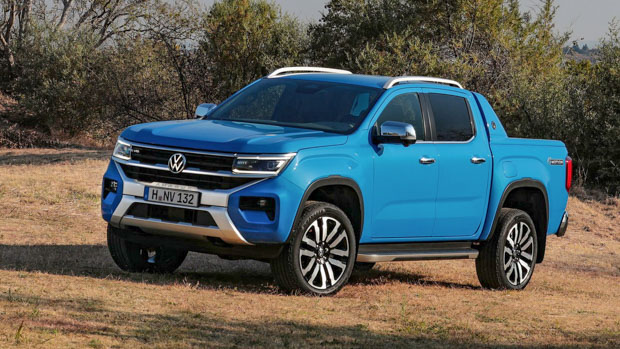-
Car Reviews
- Car News
-
Car Comparisons
Latest comparisons
- Chasing Deals
It might be sold around the world and built in South Africa but the hard work for the all-new Amarok was done right here in the land down under
The second-generation Volkswagen Amarok debuted to the world last night and will soon be sold in Europe, across Africa and Asia, and of course, right here in Australia.
But what many buyers will miss is that the vast majority of the development of this all-new Amarok was run by a crack team of engineers based in Melbourne, who worked alongside Ford for years, with influence over the development of the T6.2 platform and its selection of engines – as well as the ability to pen a remarkably distinct design for their ute.
Volkswagen’s Amarok design and development team decamped from Hannover and have worked on the ground with Ford in Melbourne since 2019 – but the co-development partnership commenced behind the scenes well before that date.
With a decision to discontinue Volkswagen’s internal Amarok production in Pacheco, Argentina locked in some years prior, the German brand set about selecting a platform-sharing partner it perceived could help create a deserved successor to the brand’s well-received premium ute.
Senior Volkswagen Commercial Vehicles executives say they considered several partners for their future Amarok but settled on Ford – a decision set against a broader vans collaboration between the manufacturers that is now bearing fruit in the European market.
Back in December 2020, then-managing director of Volkswagen Australia, Michael Bartsch, declared the Amarok-Ranger partnership would not meet the same end as the Mercedes-Benz X-Class/Nissan Navara collaboration, which saw the Nissan-based Benz ute discontinued after three years of slow sales.
“When the initial project was launched in this cooperation between Ford and Volkswagen, there was a preliminary discussion in the infant stage of the project and we made it very clear what the consumer expectations in Australia would be in terms of ensuring the product was a Volkswagen,” he said.
“We will not make the same mistake that Mercedes made with the Nissan Navara.”
While Amarok and Ranger are sold in Europe, B-segment utes such as these are primarily focussed on markets further afield: southeast Asia, South America, Africa, and most importantly – Australia.
The decision to cease South American Amarok production meant that the number-one priority market for the second-generation ute has unequivocally become Australia – a key factor in the decision to closely develop the new Volkswagen locally alongside Ford.
While much of the development story is still yet to be told – and the absolute degree of differentiation between both utes is still unfolding – executives insist that “everything you see is Volkswagen”, suggesting that while the cosmetic treatment of the vehicles is remarkably distinct, shared hardware sits beneath the skin.
Examples of this can be seen from the unique X-shape design adorning the top-spec Amarok Adventura and PanAmerican grades, which differ from the F-150-inspired design of the new Ranger. And even at the rear, where design is more restricted, Volkswagen has gone for its own C-shaped tail-lights.
In an effort to push the Amarok beyond the high bar set by its predecessor, it was also quite likely that Volkswagen pushed, or at least supported, the introduction of changes such as stretching the track 50mm wider to accommodate a Euro size pallet in the tray, standardising rear disc brakes and incorporating a grunty V6 under the bonnet.
Gu-Han Kim, head of Volkswagen Commercial Vehicles Design Studio, said at the launch of the new ute that the decision to develop the new Amarok out of Australia was ideal to test the limitations of their new ute.
“If you explore Australia outside the city, in more remote parts of the country, you will find kilometres of unsealed roads, gravel, roads and dirt roads that can be challenging to drive on,” he said.
“But of course there are no issues if you drive the Amarok and beyond that here in Australia, there are a lot of pickup drivers who love to go off-road.”
Ford Australia remains the critical “home room” (Ford parlance) for Ranger, Everest and US-market Bronco development and engineered each vehicle here in Australia – from Broadmeadows to the You Yangs proving ground to Ford’s secret outback test facility in regional South Australia.
It is not yet understood whether the Amarok scores any specific hardware compared to the T6.2 Ranger, but it is believed that the hard points and key suspension components are substantially identical.
Carsten Instra, the CEO of Volkswagen Commercial Vehicles, was keen to point out that the Amarok could still have its own unique character despite sharing the same platform as the Ranger.
“Everything you see is a Volkswagen,” he said, adding “we have that [Volkswagen look and feel] and we have a whole different philosophy”
“So while we have those synergies from the [shared] platform but we have that clear product”.
However, the question remains about whether the Amarok has picked up a unique ride and handling tune, possibly performed at Ford’s facilities in Australia. The answers to such questions will be revealed as we approach a first drive of the Amarok in late 2022.
Lars Krause, Volkswagen Commercial Vehicles executive vice president of sales and marketing, said that while the new Amarok’s petrol and diesel engines were sourced from Ford, the brands worked together to continue development of the engines for the new generation of utes.
“Yes, [the engines] are coming from Ford, but we defined [the development priorities] together with the partner that we wanted, and identified how we can develop the engines further,” he said.
“The basis is, as the customers are saying, to bring the synergies together and to have the right proposition to our customers and I think to have a line-up of all these engines and the 10-speed transmission, we have all the ingredients to really serve our customers.”
Whether all this hard work and local development pays off remains to be seen, but with the Amarok set to launch in January 2023, we won’t have to wait long to see.
Latest news
About Chasing cars
Chasing Cars reviews are 100% independent.
Because we are powered by Budget Direct Insurance, we don’t receive advertising or sales revenue from car manufacturers.
We’re truly independent – giving you Australia’s best car reviews.





